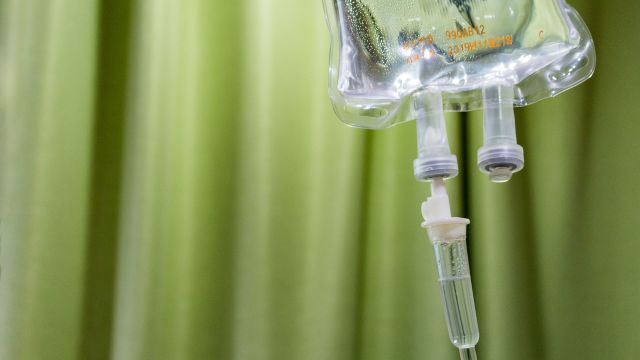Treatment options for non-Hodgkin’s lymphoma (NHL) are determined by a combination of factors, including the stage of the cancer, the patient’s age, the prognosis and the patient’s overall health. Below are some of the commonly used therapies for this type of lymphoma.
Watchful waiting
In some cases of NHL, the best course of action may be to closely monitor the condition. This is usually done for indolent, or slow growing, types of NHL that are not causing symptoms. A treatment will be given if the NHL begins to progress or if the patient begins to experience symptoms.
Chemotherapy
Also referred to as chemo, chemotherapy is considered a first-line treatment. Most medicines are liquid and are injected into a vein, yet some come in a pill. These drugs are designed to destroy cancer cells while preventing these cells from dividing and multiplying. Chemotherapy is administered in cycles, usually between two to four weeks apart, in order to give the body time to rest and recuperate. In some cases, more than one chemotherapy drug is prescribed simultaneously. Also, your physician may combine chemotherapy with a targeted therapy.
Targeted therapy
This type of treatment involves drugs that are designed to directly target cancer cells. Some targeted therapies work by blocking the function of specific molecules—such as enzymes, proteins or hormones—that certain cancers depend on in order to grow and spread. Other targeted therapies seek out specific molecules or gene mutations to identify the cancer cells to attack and destroy. There are numerous types of targeted therapies available, but they will not be a treatment option for every case of NHL. Diagnostic tests that look at the biology of the cancer cells will be used to determine whether a targeted therapy is a viable treatment option. Targeted therapies may be used on their own or within conjunction with chemotherapy.
Immunotherapy
Immunotherapies help the body’s immune system destroy cancer cells. Some immunotherapies work by boosting the function of specific parts of the immune system. Others work by introducing lab-made versions of antibodies—called monoclonal antibodies—into the immune system. In one type of immunotherapy, called chimeric antigen receptor (CAR) T-cell therapy, T cells are taken from the patient’s blood, altered in a lab and reintroduced into the body. The alterations allow the T cells to specifically target cancer cells.
There are numerous types of immunotherapy drugs available. Many are taken as an infusion, but some are taken in pill form. Immunotherapies are sometimes called biologic therapies, because they alter the way the biology of the immune system works.
Radiation therapy
Radiation therapy is another possible treatment option for NHL. Radiation therapy can be used to treat stage I or II non-Hodgkin’s lymphoma, and may be used alongside chemotherapy to treat stage III or IV.
This type of radiation therapy typically used to treat NHL is called external beam radiation. With external beam radiation, imaging scans are used to precisely plan and aim a focused beam of charged particles at the site of the cancer using a machine outside the body. Many small doses of radiation are given over a period of time to minimize damage to the healthy tissue surrounding a tumor.
Some patients may receive whole-body radiation, but this is only done if the patient is receiving a stem cell transplant. Radiation therapy may also be used to target tumors that have spread beyond the lymph nodes. This can shrink the size of tumors, and may help ease symptoms when a tumor is causing pain or impacting the function of an organ.
Blood stem cell transplant
Since cancer treatments can harm or destroy blood stem cells—where blood cells are formed in the bone marrow—a blood stem cell transplant can replace stem cells. This is typically done for patients who still have lymphoma remaining in their bodies after completing chemotherapy and patients who have experienced a lymphoma relapse.
The two main types of transplants are autologous blood stem cell transplants (which use healthy cells from your own body, which would need to be collected after diagnosis) and allogeneic blood stem cell transplants (which use healthy cells from another individual who has a similar genetic makeup). If a patient has an identical twin, they can receive a third type of stem cell transplant called a syngeneic blood cell transplant.



